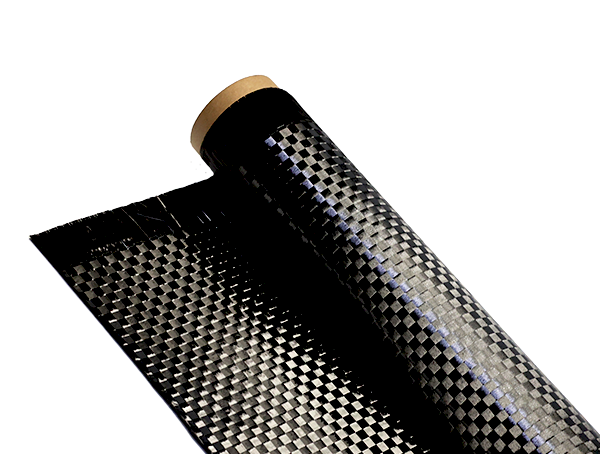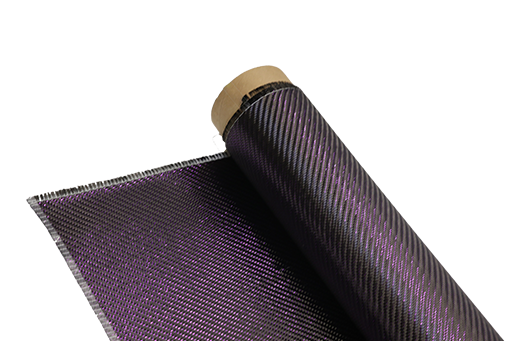من المتوقع أن يتجاوز سوق المواد المركبة $150 مليار بحلول عام 2030
-
جدول المحتويات
“Composite Materials Market Set to Surpass $150 Billion by 2030: Revolutionizing Industries with Strength and Innovation.”
The composite materials market is poised for significant growth, projected to exceed $150 billion by 2030. This surge is driven by the increasing demand for lightweight, high-strength materials across various industries, including aerospace, automotive, construction, and renewable energy. Innovations in manufacturing processes and the development of advanced composites are enhancing performance characteristics, making them more appealing for a wide range of applications. Additionally, the push for sustainability and energy efficiency is further propelling the adoption of composite materials, as they offer improved durability and reduced environmental impact compared to traditional materials. As industries continue to seek solutions that meet stringent performance and regulatory standards, the composite materials market is set to expand rapidly in the coming years.
Growth Drivers of the Composite Materials Market
The composite materials market is poised for significant growth, with projections indicating that it will exceed $150 billion by 2030. This anticipated expansion can be attributed to several key drivers that are reshaping industries and influencing consumer preferences. One of the primary factors contributing to this growth is the increasing demand for lightweight and high-strength materials across various sectors, particularly in aerospace, automotive, and construction. As industries strive to enhance fuel efficiency and reduce emissions, the adoption of composite materials, which offer superior strength-to-weight ratios compared to traditional materials, has become essential.
Moreover, the aerospace sector is experiencing a notable shift towards composite materials, driven by the need for improved performance and reduced operational costs. Aircraft manufacturers are increasingly incorporating composites into their designs to achieve significant weight reductions, which directly translate into lower fuel consumption and enhanced payload capacities. This trend is further supported by advancements in manufacturing technologies, such as automated fiber placement and resin transfer molding, which have made the production of composite components more efficient and cost-effective. As a result, the aerospace industry is expected to remain a major contributor to the growth of the composite materials market.
In addition to aerospace, the automotive industry is also embracing composite materials as a means to meet stringent regulatory standards for emissions and fuel efficiency. The shift towards electric vehicles (EVs) has further accelerated this trend, as manufacturers seek to offset the weight of heavy batteries with lightweight composite structures. This transition not only enhances the performance of EVs but also aligns with the broader goals of sustainability and environmental responsibility. Consequently, the automotive sector is anticipated to be a significant driver of demand for composite materials in the coming years.
Furthermore, the construction industry is increasingly recognizing the advantages of composite materials in building applications. The durability, corrosion resistance, and low maintenance requirements of composites make them an attractive option for infrastructure projects, particularly in harsh environments. As urbanization continues to rise globally, the need for innovative construction solutions that can withstand the test of time while minimizing environmental impact is becoming more pronounced. This trend is expected to propel the adoption of composite materials in various construction applications, from bridges to high-rise buildings.
Another critical factor influencing the growth of the composite materials market is the ongoing research and development efforts aimed at enhancing the properties and performance of these materials. Innovations in nanotechnology and bio-based composites are paving the way for new applications and expanding the potential of composites beyond traditional uses. As researchers continue to explore novel formulations and processing techniques, the versatility of composite materials is expected to increase, opening new avenues for growth across diverse industries.
In addition to technological advancements, the rising awareness of sustainability and environmental concerns is driving the demand for eco-friendly composite materials. Manufacturers are increasingly focusing on developing bio-based composites that utilize renewable resources, thereby reducing reliance on fossil fuels and minimizing carbon footprints. This shift towards sustainable practices is not only appealing to environmentally conscious consumers but also aligns with regulatory pressures aimed at promoting greener alternatives.
In conclusion, the composite materials market is on a trajectory of robust growth, fueled by the demand for lightweight, high-performance materials across various industries. The aerospace and automotive sectors, along with the construction industry, are leading the charge, while ongoing innovations and a focus on sustainability further enhance the market’s potential. As these trends continue to evolve, the composite materials market is well-positioned to exceed $150 billion by 2030, reflecting the transformative impact of composites on modern manufacturing and design.
Key Applications Fueling Market Expansion

The composite materials market is poised for significant growth, with projections indicating that it will exceed $150 billion by 2030. This remarkable expansion can be attributed to a variety of key applications that are driving demand across multiple industries. As we delve into these applications, it becomes evident that the versatility and performance characteristics of composite materials are central to their increasing adoption.
One of the most prominent sectors contributing to the growth of the composite materials market is the aerospace industry. Composites are favored in this field due to their lightweight properties, which enhance fuel efficiency and reduce emissions in aircraft. For instance, the use of carbon fiber reinforced polymers (CFRPs) in aircraft structures has become commonplace, as these materials offer superior strength-to-weight ratios compared to traditional metals. Consequently, major aerospace manufacturers are increasingly incorporating composites into their designs, leading to a surge in demand that is expected to continue in the coming years.
In addition to aerospace, the automotive industry is also experiencing a significant shift towards composite materials. As manufacturers strive to meet stringent fuel economy standards and reduce vehicle weight, composites have emerged as a viable solution. The integration of composites in automotive components, such as body panels and structural elements, not only contributes to weight reduction but also enhances safety and performance. Furthermore, the growing trend towards electric vehicles (EVs) is further propelling the demand for lightweight materials, as reducing weight is crucial for maximizing battery efficiency and range. This shift is indicative of a broader trend within the automotive sector, where sustainability and performance are becoming increasingly intertwined.
Moreover, the construction industry is witnessing a notable rise in the use of composite materials, particularly in applications such as infrastructure and building components. Composites offer exceptional durability and resistance to environmental factors, making them ideal for use in bridges, buildings, and other structures that require longevity and low maintenance. The ability of composites to withstand corrosion and extreme weather conditions is particularly advantageous in regions prone to harsh climates. As urbanization continues to accelerate globally, the demand for innovative construction materials that can meet the challenges of modern infrastructure is expected to drive further growth in the composite materials market.
Another area where composite materials are making significant inroads is in the wind energy sector. The blades of wind turbines are increasingly being manufactured from composite materials, which provide the necessary strength and flexibility to withstand the forces of nature while remaining lightweight. As the world shifts towards renewable energy sources, the demand for wind energy is expected to rise, thereby boosting the need for advanced composite materials in turbine production. This trend not only supports the growth of the composite materials market but also aligns with global sustainability goals.
In addition to these key applications, the medical industry is also beginning to explore the potential of composite materials. From prosthetics to surgical instruments, the unique properties of composites can enhance performance and patient outcomes. As research and development in this field continue to advance, it is likely that we will see an increasing number of applications emerge, further contributing to market expansion.
In conclusion, the composite materials market is on a trajectory of robust growth, driven by diverse applications across aerospace, automotive, construction, wind energy, and medical sectors. As industries increasingly recognize the benefits of composites, including weight reduction, enhanced performance, and sustainability, the market is set to exceed $150 billion by 2030. This trend underscores the transformative potential of composite materials in shaping the future of various industries.
Future Trends and Innovations in Composite Materials
The composite materials market is poised for significant growth, with projections indicating it will exceed $150 billion by 2030. This anticipated expansion is driven by a confluence of factors, including advancements in technology, increasing demand across various industries, and a growing emphasis on sustainability. As we look to the future, several trends and innovations are emerging that will shape the landscape of composite materials.
One of the most notable trends is the increasing integration of smart technologies into composite materials. Researchers are exploring the incorporation of sensors and actuators within composite structures, enabling real-time monitoring of performance and structural integrity. This innovation not only enhances safety but also extends the lifespan of composite components, particularly in critical applications such as aerospace and automotive industries. By embedding these smart features, manufacturers can create adaptive materials that respond to environmental changes, thereby improving efficiency and reducing maintenance costs.
In addition to smart technologies, the development of bio-based composites is gaining traction. As environmental concerns become more pressing, the demand for sustainable materials is on the rise. Bio-based composites, which utilize renewable resources such as natural fibers and bio-resins, offer a promising alternative to traditional petroleum-based composites. These materials not only reduce the carbon footprint associated with production but also provide comparable mechanical properties. Consequently, industries are increasingly adopting bio-based composites in applications ranging from packaging to automotive components, reflecting a broader shift towards sustainability.
Moreover, advancements in manufacturing processes are revolutionizing the production of composite materials. Techniques such as additive manufacturing, or 3D printing, are enabling the creation of complex geometries that were previously unattainable with conventional methods. This innovation allows for greater design flexibility and customization, catering to specific performance requirements. As additive manufacturing continues to evolve, it is expected to play a pivotal role in reducing waste and lowering production costs, further driving the adoption of composite materials across various sectors.
Another significant trend is the increasing use of composites in the construction industry. As urbanization accelerates and infrastructure demands grow, composite materials are being recognized for their lightweight yet durable properties. They offer advantages such as resistance to corrosion and reduced maintenance needs, making them ideal for applications in bridges, buildings, and other structures. The ability to combine composites with traditional materials, such as concrete and steel, is also being explored, leading to hybrid solutions that enhance overall performance and sustainability.
Furthermore, the aerospace sector continues to be a major driver of innovation in composite materials. The push for lighter, more fuel-efficient aircraft has led to the increased use of advanced composites in airframes and components. Innovations such as carbon fiber reinforced polymers (CFRPs) are becoming standard in aircraft design, contributing to significant weight reductions and improved fuel efficiency. As the aerospace industry seeks to meet stringent environmental regulations, the demand for high-performance composite materials is expected to surge.
In conclusion, the future of the composite materials market is bright, characterized by a myriad of trends and innovations that promise to reshape industries. From the integration of smart technologies and the rise of bio-based composites to advancements in manufacturing processes and increased applications in construction and aerospace, the landscape is evolving rapidly. As these trends continue to unfold, they will not only drive market growth but also contribute to a more sustainable and efficient future. The composite materials market is indeed on the brink of a transformative era, with the potential to exceed $150 billion by 2030, reflecting the dynamic interplay of innovation and demand across various sectors.
الأسئلة والأجوبة
1. **What is driving the growth of the composite materials market?**
The growth is primarily driven by increasing demand in aerospace, automotive, and construction industries due to the lightweight, high strength, and corrosion resistance properties of composite materials.
2. **What are the key applications of composite materials?**
Key applications include aerospace components, automotive parts, wind turbine blades, sporting goods, and construction materials.
3. **Which regions are expected to dominate the composite materials market by 2030?**
North America and Asia-Pacific are expected to dominate the market, with significant growth anticipated in emerging economies due to industrialization and infrastructure development.The composite materials market is projected to exceed $150 billion by 2030, driven by increasing demand across various industries such as aerospace, automotive, construction, and renewable energy. Factors contributing to this growth include the lightweight and high-strength properties of composite materials, advancements in manufacturing technologies, and a growing emphasis on sustainability. As industries continue to seek innovative solutions for performance and efficiency, the composite materials market is poised for significant expansion in the coming years.











